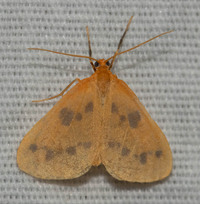« |
Home |  » » |
| View PDF | Geometridae Members: | Eubaphe Members: | 30 NC Records |
|---|
Eubaphe meridiana (Slosson, 1889) - Little Beggar Moth |
 |
Photo Gallery for Eubaphe meridiana - Little Beggar Moth | Photos: 8 |
| Moths of North Carolina |
« |
Home |  » » |
| View PDF | Geometridae Members: | Eubaphe Members: | 30 NC Records |
|---|
Eubaphe meridiana (Slosson, 1889) - Little Beggar Moth |
 |
Photo Gallery for Eubaphe meridiana - Little Beggar Moth | Photos: 8 |